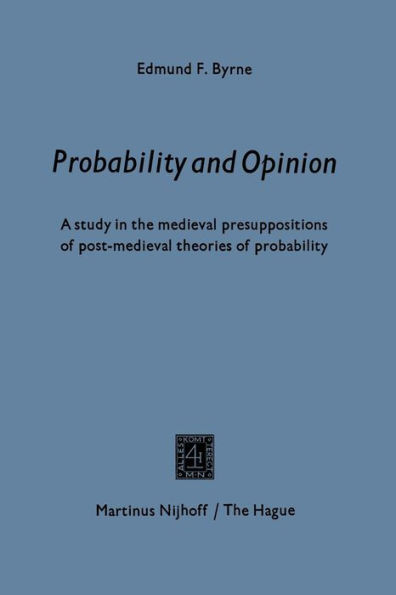Probability and opinion: A Study in the Medieval Presuppositions of Post-Medieval Theories of Probability
Modern physics has accustomed us to consider events which cannot give rise to certainty in our knowledge. A scientific knowledge of such events is nevertheless possible. The method which has enabled us to obtain a stable and exact knowledge about uncertain events consists in a kind of changing of plane and in the replacing of the study of indi vidual phenomena by the study of statistical aggregates to which those phenomena can give rise. A statistical aggregate is not a collection of real phenomena, among which some would happen more often, others more rarely. It is a set of possibilities relative to a certain object or to a certain type of phenomenon. For example, we could consider the differ ent ways in which a die, thrown in given conditions, can fall: they are the possible results of a certain trial, the casting of the die (in the fore seen conditions). The set of those results constitutes effectively a set of possibilities, relative to a phenomenon of a certain type, the fall of the die in specified circumstances. Similarly, it is possible to consider the different velocities which can affect a molecule in a volume of gas; the set of those velocities constitutes effectively a set of possible values which a physical property, namely the velocity of a molecule, can have.
1119383385
Probability and opinion: A Study in the Medieval Presuppositions of Post-Medieval Theories of Probability
Modern physics has accustomed us to consider events which cannot give rise to certainty in our knowledge. A scientific knowledge of such events is nevertheless possible. The method which has enabled us to obtain a stable and exact knowledge about uncertain events consists in a kind of changing of plane and in the replacing of the study of indi vidual phenomena by the study of statistical aggregates to which those phenomena can give rise. A statistical aggregate is not a collection of real phenomena, among which some would happen more often, others more rarely. It is a set of possibilities relative to a certain object or to a certain type of phenomenon. For example, we could consider the differ ent ways in which a die, thrown in given conditions, can fall: they are the possible results of a certain trial, the casting of the die (in the fore seen conditions). The set of those results constitutes effectively a set of possibilities, relative to a phenomenon of a certain type, the fall of the die in specified circumstances. Similarly, it is possible to consider the different velocities which can affect a molecule in a volume of gas; the set of those velocities constitutes effectively a set of possible values which a physical property, namely the velocity of a molecule, can have.
99.99
In Stock
5
1

Probability and opinion: A Study in the Medieval Presuppositions of Post-Medieval Theories of Probability
334
Probability and opinion: A Study in the Medieval Presuppositions of Post-Medieval Theories of Probability
334Paperback(1968)
$99.99
99.99
In Stock

Product Details
| ISBN-13: | 9789401502955 |
|---|---|
| Publisher: | Springer Netherlands |
| Publication date: | 01/01/1968 |
| Edition description: | 1968 |
| Pages: | 334 |
| Product dimensions: | 6.10(w) x 9.25(h) x 0.03(d) |
From the B&N Reads Blog
